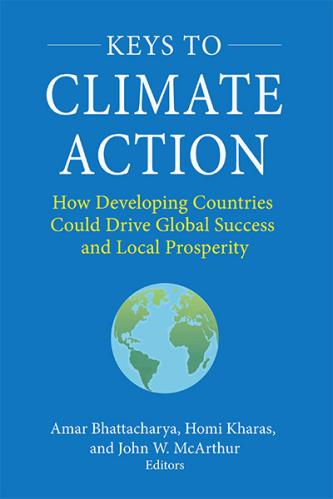Inadequate supply of gas and coal, reportedly, resulted in lost output of 25.7 billion units of electricity in 2005/06, of which 24 billion units was attributable to a shortage of gas. While the imperative of making coal and gas sectors operate on market based principles underpinned by competition is unexceptionable, it is also clear that not much headway will be made in that direction unless the principal off-takers, too, conform to commercial norms of conducting business. Having said this, as India joins the rank of countries that look to natural gas as a clean and efficient feedstock and fuel, the opportunity of getting the sector “right” (in terms of policy and regulation), presents itself since it is relatively devoid of legacy issues.
Diverse sources have estimated that demand for natural gas in India will increase by a multiple from the current 90 million standard cubic metres per day (MMSCMD). The Expert Committee on Integrated Energy Policy has projected requirements of 177 MMSCMD in 2011/2012 to support a GDP growth rate of 8 percent per annum. Some industry stakeholders estimate that demand could eventually touch 400 million MMSCMD. There is some justification in the contention that unmet gas demand will be on the higher side, in part since the extant pipeline network is limited. India has one major trunk pipeline, hence demand is geographically concentrated, and even in these areas, especially western India there is unsatisfied demand.
A major part of the increase in demand for gas is expected from electricity generators, whose share is expected to increase from 10 percent to over one-fourth. Therefore, added uncertainty permeates the demand side since the electricity distribution segment in its present financially parlous state may not be able to pay for the larger quantity of mega watts that are envisaged. Even as power remains the major consumer of gas, future demand pattern could tilt towards alternate uses like urban and industrial use. This observation may strike some as fanciful, but city gas distribution networks are being planned in up to twenty cities and new discoveries in southern and western regions is bringing forth a desire to channel these new sources. Millions of new consumers will be a reality in the next few years.
Internationally, changes that engender inflection points in the evolution of a market are evident. Whether it is sustainable or not remains to be seen, but the global gas market is seeing more contracts that are spot in nature, which helps to integrate markets and allows for a wider price discovery process. The transformation is facilitated, inter alia, by: the geographical diversity of emerging sources of gas, allowing for more seamless supply to established centres of Europe, N. America, and Japan, Korea and Taiwan; less rigid long-term contracts that allow buyers to schedule their off-take commitments in tune with seasonal variations in demand and allow for diversion of supply to other destinations; larger numbers of LNG ships plying the high seas, which allows for more interchanges and diversion of cargoes (the share of LNG tankers that are not dedicated to a particular project has, since 2003, tripled to one-third); and falling costs of transporting LNG (for example, transport cost can be as low as 25c/MMBTU (Millions of British Thermal Units) to the west coast from the Persian Gulf).
Multiple players are already present (and more will enter) in all segments of the natural gas chain in India: upstream (ONGC, Reliance, Cairn, GSPC, HOEC etc.), terminals (Petronet LNG, Shell, Dabhol), midstream (GAIL, Gujarat State Petronet, Reliance, and ventures in Andhra Pradesh and Tamil Nadu), downstream (NTPC, Reliance Energy, Gujarat Gas, various cities undertaking preparatory work for establishing distribution networks), and consumers (industry, buyers of CNG etc.). The government of India has a couple of instruments that it might be inclined to deploy to force-fit a match between demand and supply of natural gas. “Production Sharing Contracts (PSCs), which stipulate that the Indian domestic market shall have the first call on the utilisation of gas discovered and produced from the contract area. “Profit gas” is the fraction of gas that private players have agreed to share as part of the bidding metric of the PSC with the government. The government has the option of taking profit gas either in cash or kind, and recent indications are that it has a preference for physical delivery, which it could then decide to supply at sub-market prices to select categories of consumers. If allocation from new discoveries is at a price other than the market price, it will deepen the segmentation of the market, and, rationing of administered gas will intensify (most domestically produced gas is supplied through administrative allocations). To the credit of legislators, the Petroleum and Natural Gas Regulatory Board Act, 2006 has left both upstream and downstream prices outside the Board’s ambit.
There are pernicious requests from influential quarters to supply ever larger amounts of gas from new fields to power stations at a discount to the market. Determining the beneficiaries will most likely be contentious since it is not possible to fulfill all claimants. If power generators are deemed credit-worthy long-term (anchor) customers by suppliers, they may well be supplied gas at a lower price compared to other off-takers, but suppliers should not be sand bagged to do this. While some back-of-the-envelope calculations suggest that a price in excess of $3.50/MMBTU will make gas uncompetitive as an alternative to coal for power generation, optimised generation portfolios of utilities may well be able to support gas delivered at a higher price.
Going forward, it is important to be mindful that allocative efficiency requires the domestic price (net of taxes and transportation costs) of a traded commodity (like natural gas) to not deviate significantly from international benchmarks of comparable contracts. Increasing liquidity in the gas market, and development of commercial and financial risk mitigation instruments (derivatives are available on the commodity exchanges) will help to promote gas use among (hitherto ignored) small and medium downstream consumers, which, in turn will contribute to the evolution of a vibrant and integrated gas market.
While there may be disagreement on aspects of the gas sector, there is consensus that to fully harness natural gas as a feedstock and fuel, laying of the associated evacuation and transmission infrastructure will have to be stepped up significantly. The next article will examine the efficacy of the regulatory framework for this important task.
* The author is with Financial Technologies (India) Ltd., and is a Non-resident Fellow of the Brookings Institution. Disclosure: he is a member of the board of Gujarat State Petroleum Corporation. Views expressed here are personal and do not represent those of the above organizations.



Commentary
Op-edTowards a Rational Market for Natural Gas
December 16, 2006